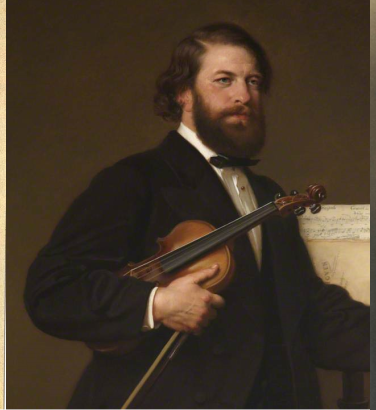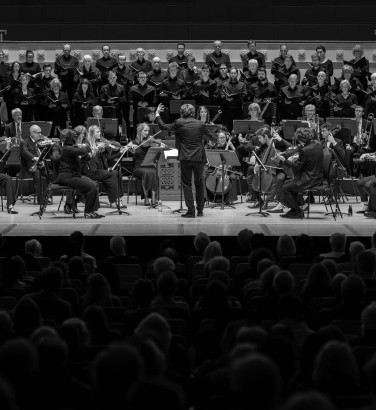
Scandinavian myths in music
11 Mar 2024
News Story
Detail from The Defense of the Sampo (1896), a painting by Akseli Gallen-Kallela showing a scene from the Finnish epic Kalevala
If Greek and Roman mythology proved a very popular subject for composers right to the end of the 18th century (especially when it came to opera), it has long since been eclipsed by legends from Scandinavia. Between Viking sagas, warring Norse gods and no end of fantastical creatures, this folk tradition is so broad that successive generations of musicians can hardly be blamed for mining it for inspiration.
Even Wagner’s Ring, which stereotypes would have us believe is as German as German can be, owes a good deal to Norse legend. The Medieval German epic poem Nibelungenlied was admittedly the prime source for Götterdämmerung (Twilight of the Gods), the fourth and final part of the cycle, but many of the details that lead up to this devastating conclusion are drawn from the Scandinavian folk tradition. Wagner seamlessly weaves elements of German and Norse legend together to create the world of the Ring: several character names are rendered in a more Germanic form - Brunhild becomes Brünnhilde, her father Odin is renamed Wotan – but the home of the gods, for instance, remains Valhalla.
Wagner can be credited with spearheading a revival of interest in the epic side of Norse mythology, one which persists to this day. Even as he was working on the Ring cycle (which he completed in 1874), the now little-known French composer Ernest Reyer was writing his opera Sigurd (known as Siegfried in Wagner), which tells of the title character’s passionate love for Brunehild. It finally received its premiere in 1884 and, despite keeping its head above water well into the 20th century, has all but dropped out of the repertoire. (It was not heard in Germany until 2015, which says a lot for Wagner’s ubiquity there.)
At a greater remove from Wagner, a small number of later composers have also written music inspired by this same epic story. These include Tveitt’s 1957 symphonic poem Nykken, named after a Norwegian spirit believed to exist close to riverbanks, and more recently a pair of concertos by Rouse: Der gerettete Alberich (Alberich Saved) for percussion and Heimdall’s Trumpet for trumpet, in 1997 and 2012 respectively.
A hungry wolf is bound to wage a hard battle.
Tveitt is, of course, far from the first Scandinavian composer to delve into his own culture for inspiration. The name Rikard Nordraak would probably be better remembered today had he not died at the young age of 23, but his having encouraged Grieg - a year his junior - to represent their native Norway in his own works ensures that he is considerably more than a footnote in the history of music. (He did, however, write what is now the Norwegian national anthem.)
Grieg took this advice to heart. Among his ten books of Lyric Pieces, for instance, we find such evocative titles as Elverdans (Elves’ Dance) and Troldtog (March of the Dwarves), both steeped in Norse mythology, along with a handful entitled Halling (a traditional Norwegian dance). He also captures the natural world – as vital a part of Norwegian identity as mist-bound glens are to us in Scotland – in pieces such as Aftem på Højfjeldet (Evening in the Mountains) or Skovstilhed (Peace of the Woods).
If Grieg sometimes struggled to reconcile his folk-influenced idiom with the demands of larger-scale classical forms, this was less of a problem for Sibelius. He repeatedly found inspiration in the Kalevala, an epic 19th century poem by Elias Lönnrot which draws together centuries of Finnish mythology and folklore. Widely regarded as a foundational text of Finnish culture (and believed to have contributed to the country gaining independence from Russia in 1917), it served as the basis for over a dozen of Sibelius’ most significant works, the symphonic poem The Swan of Tuonela (which the Orchestra played in April 2024) among them.
It's worth noting, of course, that the influence of all these Nordic sagas reaches far beyond the realms of classical music. Led Zeppelin’s Immigrant Song, with lyrics referencing Norse mythology, was inspired by a concert the band gave in Reykjavik in 1970, and has influenced countless rock and metal groups into adopting Viking-related imagery ever since, from Iron Maiden to Lordi.
Literature going all the way back to Beowulf - dated anywhere between 700 and 1000 CE, depending on whom you ask - also owes a debt to this Scandinavian myth: it has made a mark on everything from Tolkien’s Lord of the Rings to George R.R. Martin’s A Song of Ice and Fire, not forgetting Marvel Comics’ Thor series. (The new incarnations of these texts on the big and small screen have been considerably enriched by a visual element also drawn from these Nordic influences.) Even at the (supposedly) child-friendlier end of the spectrum, the bleakness at the heart of many a Hans Christian Andersen tale can also be traced back to this same world, creating a new Scandinavian mythology on a par with Grieg's Peer Gynt.
Related Stories
![A violinist shown at three different ages: as a young man in a drawing, middle-aged in a painting and elderly in an old photo]()
Joseph Joachim and the great German violin concertos
7 April 2025
Beethoven, Mendelssohn, Bruch and Brahms: four violin concertos, all connected by a single violinist.![Three men, the first two in 18th century formal dress (one in black and white, one in a red coat), the last in an old photo, smoking]()
What is a sinfonia concertante?
17 March 2025
We delve into the history of a hybrid genre ...![]()
The SCO Chorus on music for Lent
10 March 2025
With Easter just around the corner, we delve into perhaps the richest (and often darkest) choral repertoire of all ...


